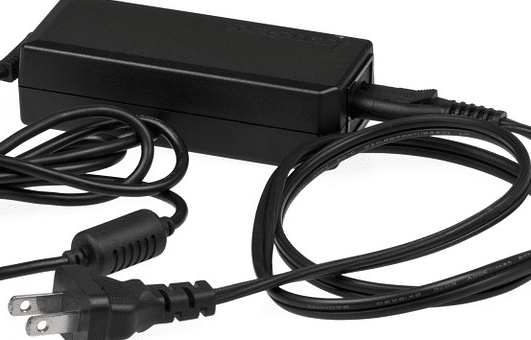
One of the most treasured gadgets in the developed world is a computer. A 2015 census report revealed that 78 percent of American homes had at least a laptop or desktop. Since these appliances perform similar functions, there must be some factors influencing a consumer’s buying decision.
Most people consider things like the brand, price, processing power, portability, and storage space when shopping for a computer. Few buyers will think about electricity consumption, but those who care know that laptops are more economical.
So, how much power is a laptop drawing? This post will paint a picture of energy consumption by laptops under some conditions. Let’s get started.
Factoring Power Consumption in Laptops
Manufacturers take electricity consumption in laptops seriously. It determines the amount of time the device can run on the battery without recharging, which is a critical factor to laptop users. For this reason, computer designers aim to install the most energy-efficient components in laptops.
Computers come with various power management settings which you can tweak to your liking. You can limit a laptop’s power consumption by activating the power saver mode.
Power Rating
All electrical appliances have a power rating, which indicates the optimum amount of electricity needed for smooth operation. It comes in watts (W) or kilowatts (kW), where one kilowatt is equal to 1,000 watts.
We measure the amount of electrical energy consumed by an appliance in terms of time and express it as kilowatt-hour (kWh). In other words, 1kwh is one unit of electricity. Energy suppliers charge per kWh.
Laptops and notebooks are highly power-efficient. They rarely have video cards, which are often power-hungry. Instead, they come with graphics processing units (GPU or integrated graphics) embedded on the motherboard.
The central processing unit (CPU) is typically the highest electricity-consuming component. Apart from the CPU, the screen also consumes a considerable amount of electrical power. Its efficiency depends on the size, resolution, and brightness.
The power rating of an average laptop will be anything between 20 watts and 100 watts. Consumption usually increases when the battery is charging. A 14-inch notebook for regular home or office use may have a power rating of about 60 watts when connected to the charger.
Example:
Let’s consider the MacBook Pro, one of the most robust laptops in use today. The 13-inch and the 15-inch versions come with 61W and 87W chargers, respectively. Their energy consumption will never exceed their corresponding power ratings.
When idle, the 13-inch MacBook Pro consumes about 13 watts per hour. The power rating drops to an incredible 1 watt when the laptop is in sleep mode.
US EPA Ratings for Laptops and Tablets
The US Environmental Protection Agency launched the Energy Star rating system for computers in 2009 to classify devices depending on their energy consumption. At that time, only 25 percent of computers passed the energy-efficiency test. Below is the classification of laptops by EPA.
• Category A: At most 40.0 kWh
• Category B: At most 53.0 kWh
• Category C: At most 88.5 kWh
Computers endorsed by Energy Star usually display the Energy Star logo on when booting.
Gaming Laptops
A gaming laptop has the immense processing power needed to handle games like a modern gaming PC. Many gamers are buying these devices for portability and energy-saving benefits.
Like any other laptop, you can tell the energy requirements of a machine by checking its power rating on the charger.
For instance, a gaming machine may have a power rating of 135 watts, but the charger indicates 180 watts. What is the meaning of this? For optimum operation, the laptop runs on 135 watts every hour. However, its consumption will never exceed 180 watts per hour.
How Much Power Does a Laptop Draw?
The architecture of the laptop is the primary factor. A typical laptop will consume electricity in any of the following modes:
• Active State: A user is actively working on the computer (maximum electricity consumption)
• Idle State: Operating system loaded and default programs running
• Sleep Mode: A state of low power consumption after the stays inactive for a certain period
• Standby Mode: Charger connected to the mains, but the computer is shut down
As you have seen, power consumption depends on many factors. If you want to minimize your electricity bills, look for a laptop with a low power rating.

Comments are closed.